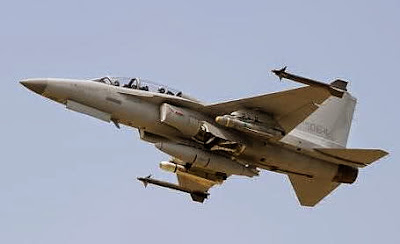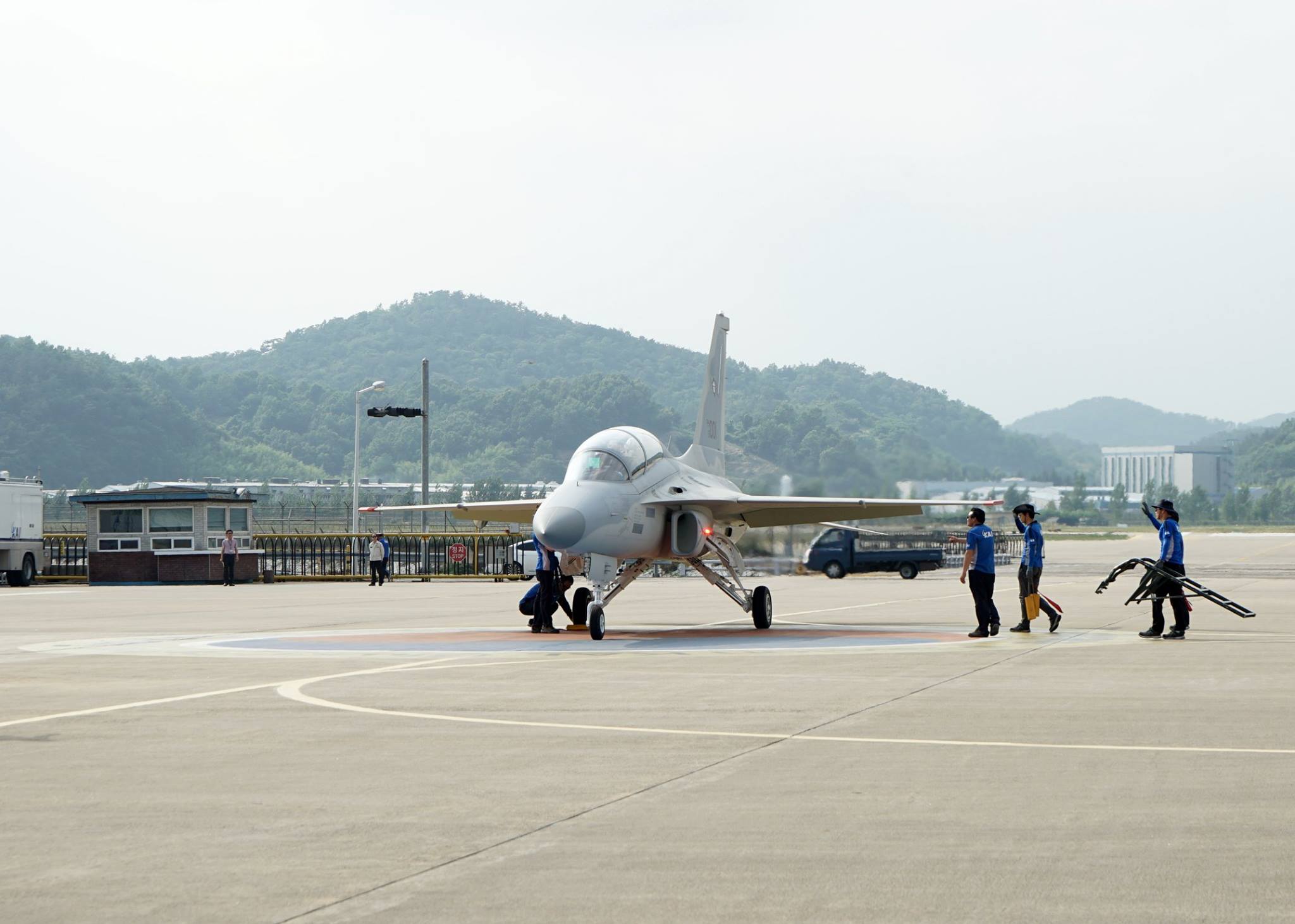Cossack25A1
SENIOR MEMBER

- Joined
- Jul 11, 2014
- Messages
- 2,566
- Reaction score
- 2
- Country
- Location
Business News:
-----
World Bank keeps 6.5% growth forecast for Phl this year
By Ted P. Torres (The Philippine Star)
Updated June 12, 2015 - 12:00am
MANILA, Philippines - The World Bank has retained its growth outlook for the Philippines at 6.5 percent this year and in 2016, an improvement from last year’s gross domestic product (GDP) growth of 6.1 percent.
“Growth in the Philippines is projected to remain strong, benefitting from a recovery in Japan and from low fuel prices,” the latest Global Economic Prospects (GEP) report of the World Bank said.
However, the report warned that budget execution bottlenecks in the Philippines could contribute anew to weaker economic activity, as first quarter GDP slipped to 5.2 percent due to poor public spending.
The GEP, meanwhile, tempered its growth forecast for global and developing countries.
Growth outlook for developing countries stood at 4.4 percent this year, from the 4.6-percent GDP growth rate in 2014.
Similarly, its growth outlook for East Asia and Pacific cooled to 6.5 percent from 6.7 percent.
In a press statement, World Bank Group president Jim Yong Kim described developing countries as the engine of global growth following the financial crisis.
“But now they face a more difficult economic environment,” Kim added.
With an expected lift-off in US interest rates, the report said borrowings would become more expensive for emerging and developing economies over the coming months. This process is expected to unfold relatively smoothly since the US economic recovery is continuing and interest rates remain low in other major global economies.
Just as the initial announcement of US policy normalization caused turmoil in financial markets in 2013 – now referred to as the “taper tantrum” – the US Federal Reserve’s first interest rate increase since the global financial crisis could ignite market volatility and reduce capital flows to emerging markets by up to 1.8 percentage points of GDP, the report said.
World Bank chief economist and senior vice president Kaushik Basu said the ground beneath the global economy is shifting. China has avoided the potholes skillfully for now and is easing to a growth rate of 7.1 percent.
India, with an expected growth of 7.5 percent this year, for the first time, is leading the World Bank’s growth chart of major economies.
For commodity-exporting emerging markets that are already struggling to adjust to persistently low commodity prices, or for countries experiencing policy uncertainty, a slowdown in capital flows would add to their policy challenges.
In contrast, high-income countries’ recovery is gaining momentum, as growth in the euro area and Japan picks up, and the United States continues to expand, despite a weak start to the year.
High-income countries are on course to grow by two percent this year, 2.4 percent in 2016 and 2.2 percent in 2017.
The global economy is likely to expand 2.8 percent this year, 3.3 percent in 2016 and 3.2 percent in 2017, the World Bank added.
-----
World Bank keeps 6.5% growth forecast for Phl this year | Business, News, The Philippine Star | philstar.com
-----
===========================================================================================================================================
===========================================================================================================================================
Politics and International Diplomacy News:
-----
PNoy to Chinese envoy, other diplomats: Respect int'l law
By Louis Bacani (philstar.com)
Updated June 12, 2015 - 1:52pm
MANILA, Philippines - President Benigno Aquino III on Friday marked the country's Independence Day with a call for mutual respect among nations.
In his message during the traditional Independence Day vin d'honneur, Aquino told foreign diplomats that countries must foster greater cooperation in confronting the world's problems.
"Excellencies, as we are determined to join your nations in the struggle to overcome the obstacles you face, so too do we ask you to join us. In this way, we can truly forge a global community in which each nation-state realizes that their growth and stability hinge on their ability to work with others," Aquino said in his toast at the Casa Real de Iloilo, Iloilo City.
"This is the clearest path towards a world where there is mutual respect, where we are all bound by international law and by a single definition of our entitlements and obligations; where we are all brothers, all of equal footing, working side-by-side," the president added.
Among the diplomats who were present during the Independence Day celebration in Iloilo was Chinese Ambassador to the Philippines Zhao Jianhua.
Zhao made headlines earlier this week after not attending the Filipino-Chinese friendship day, which was marred by the continuing territorial dispute between the Philippines and China.
The country is celebrating its 117th Independence Day in the face of a big threat to its sovereignty - China's aggression in the West Philippine Sea.
Manila has filed an arbitration case before an international tribunal to question Beijing's execessive territorial claims. The Asian giant, however, has refused to participate and has increased its efforts of building artificial islands in the contested waters.
During his state visit to Japan last week, Aquino again criticized China's unlawful maritime actions, likening its large-scale reclamation to Nazi Germany's imperialism before World War II.
-----
PNoy to Chinese envoy, other diplomats: Respect int'l law | Headlines, News, The Philippine Star | philstar.com
-----
Chinese envoy to attend Independence Day celebration in Iloilo
By Pia Lee Brago (The Philippine Star)
Updated June 12, 2015 - 12:00am
MANILA, Philippines - After skipping last Monday’s advance Independence Day celebration in Manila by Filipino-Chinese businessmen, Chinese Ambassador Zhao Jianhua has confirmed his attendance at today’s rites in Iloilo where President Aquino is guest speaker.
“He is attending the celebration in Iloilo,” embassy spokesperson Li Lingxiao told The STAR, referring to Zhao.
The ambassador’s begging off from Monday’s event came on the heels of President Aquino’s comparing China’s activities in the West Philippine Sea to pre-World War II Nazi Germany’s annexation of European territories.
Aquino made the comparison in a speech before Japanese business leaders in Tokyo on the sidelines of his state visit recently.
Li claimed Zhao was supposed to attend the event last Monday where the President was guest speaker but “changed his schedule for another appointment.”
The Federation of Filipino-Chinese Chambers of Commerce and Industry Inc. organized the event last Monday.
Li said Zhao was among the foreign dignitaries who flew on a chartered Philippine Airlines (PAL) flight to Iloilo for the event.
Aquino’s “Nazi” remarks drew condemnation from Beijing. He was more conciliatory in his speech in the FFCCCII event, where he reminded his audience of the long history of friendship between the Philippines and China.
Zhao later acknowledged Aquino’s “positive” remarks and expressed confidence the two countries can “properly handle” their differences.
Documentary launched
As part of the commemoration of the 117th anniversary celebration of Independence Day, the Department of Foreign Affairs (DFA) is launching today a three-part documentary on the West Philippine Sea called “KALAYAAN.”
Each episode focuses on a different angle of the issue: economic, historical and legal.
The production is in partnership with the Presidential Communications Operations Office (PCOO). The first episode is set to air today.
Foreign Affairs spokesman Charles Jose said the documentary is part of a nationwide information campaign aimed at increasing the level of public awareness of the West Philippine Sea issue.
KALAYAAN is directed by RA Rivera Jr. and hosted by broadcast journalist and writer Lourd de Veyra and Jun Sabayton.
A preview of the first episode of the documentary was shown at the DFA yesterday. The first episode centers on the projected economic losses if China is left to impose its so-called nine-dash line.
The documentary also tackles the case filed by the Philippines against China before the International Tribunal on the Law of the Sea challenging Beijing’s nine-dash line claim.
“It’s said in the economic aspect (of the documentary) that if you leave unchallenged the nine-dash line we will be losing 90 percent of the Philippines’ exclusive economic zone (EEZ) and its natural resources,” Jose said in a press briefing.
-----
Chinese envoy to attend Independence Day celebration in Iloilo | Headlines, News, The Philippine Star | philstar.com
-----
-----
World Bank keeps 6.5% growth forecast for Phl this year
By Ted P. Torres (The Philippine Star)
Updated June 12, 2015 - 12:00am
MANILA, Philippines - The World Bank has retained its growth outlook for the Philippines at 6.5 percent this year and in 2016, an improvement from last year’s gross domestic product (GDP) growth of 6.1 percent.
“Growth in the Philippines is projected to remain strong, benefitting from a recovery in Japan and from low fuel prices,” the latest Global Economic Prospects (GEP) report of the World Bank said.
However, the report warned that budget execution bottlenecks in the Philippines could contribute anew to weaker economic activity, as first quarter GDP slipped to 5.2 percent due to poor public spending.
The GEP, meanwhile, tempered its growth forecast for global and developing countries.
Growth outlook for developing countries stood at 4.4 percent this year, from the 4.6-percent GDP growth rate in 2014.
Similarly, its growth outlook for East Asia and Pacific cooled to 6.5 percent from 6.7 percent.
In a press statement, World Bank Group president Jim Yong Kim described developing countries as the engine of global growth following the financial crisis.
“But now they face a more difficult economic environment,” Kim added.
With an expected lift-off in US interest rates, the report said borrowings would become more expensive for emerging and developing economies over the coming months. This process is expected to unfold relatively smoothly since the US economic recovery is continuing and interest rates remain low in other major global economies.
Just as the initial announcement of US policy normalization caused turmoil in financial markets in 2013 – now referred to as the “taper tantrum” – the US Federal Reserve’s first interest rate increase since the global financial crisis could ignite market volatility and reduce capital flows to emerging markets by up to 1.8 percentage points of GDP, the report said.
World Bank chief economist and senior vice president Kaushik Basu said the ground beneath the global economy is shifting. China has avoided the potholes skillfully for now and is easing to a growth rate of 7.1 percent.
India, with an expected growth of 7.5 percent this year, for the first time, is leading the World Bank’s growth chart of major economies.
For commodity-exporting emerging markets that are already struggling to adjust to persistently low commodity prices, or for countries experiencing policy uncertainty, a slowdown in capital flows would add to their policy challenges.
In contrast, high-income countries’ recovery is gaining momentum, as growth in the euro area and Japan picks up, and the United States continues to expand, despite a weak start to the year.
High-income countries are on course to grow by two percent this year, 2.4 percent in 2016 and 2.2 percent in 2017.
The global economy is likely to expand 2.8 percent this year, 3.3 percent in 2016 and 3.2 percent in 2017, the World Bank added.
-----
World Bank keeps 6.5% growth forecast for Phl this year | Business, News, The Philippine Star | philstar.com
-----
===========================================================================================================================================
===========================================================================================================================================
Politics and International Diplomacy News:
-----
PNoy to Chinese envoy, other diplomats: Respect int'l law
By Louis Bacani (philstar.com)
Updated June 12, 2015 - 1:52pm
MANILA, Philippines - President Benigno Aquino III on Friday marked the country's Independence Day with a call for mutual respect among nations.
In his message during the traditional Independence Day vin d'honneur, Aquino told foreign diplomats that countries must foster greater cooperation in confronting the world's problems.
"Excellencies, as we are determined to join your nations in the struggle to overcome the obstacles you face, so too do we ask you to join us. In this way, we can truly forge a global community in which each nation-state realizes that their growth and stability hinge on their ability to work with others," Aquino said in his toast at the Casa Real de Iloilo, Iloilo City.
"This is the clearest path towards a world where there is mutual respect, where we are all bound by international law and by a single definition of our entitlements and obligations; where we are all brothers, all of equal footing, working side-by-side," the president added.
Among the diplomats who were present during the Independence Day celebration in Iloilo was Chinese Ambassador to the Philippines Zhao Jianhua.
Zhao made headlines earlier this week after not attending the Filipino-Chinese friendship day, which was marred by the continuing territorial dispute between the Philippines and China.
The country is celebrating its 117th Independence Day in the face of a big threat to its sovereignty - China's aggression in the West Philippine Sea.
Manila has filed an arbitration case before an international tribunal to question Beijing's execessive territorial claims. The Asian giant, however, has refused to participate and has increased its efforts of building artificial islands in the contested waters.
During his state visit to Japan last week, Aquino again criticized China's unlawful maritime actions, likening its large-scale reclamation to Nazi Germany's imperialism before World War II.
-----
PNoy to Chinese envoy, other diplomats: Respect int'l law | Headlines, News, The Philippine Star | philstar.com
-----
Chinese envoy to attend Independence Day celebration in Iloilo
By Pia Lee Brago (The Philippine Star)
Updated June 12, 2015 - 12:00am
MANILA, Philippines - After skipping last Monday’s advance Independence Day celebration in Manila by Filipino-Chinese businessmen, Chinese Ambassador Zhao Jianhua has confirmed his attendance at today’s rites in Iloilo where President Aquino is guest speaker.
“He is attending the celebration in Iloilo,” embassy spokesperson Li Lingxiao told The STAR, referring to Zhao.
The ambassador’s begging off from Monday’s event came on the heels of President Aquino’s comparing China’s activities in the West Philippine Sea to pre-World War II Nazi Germany’s annexation of European territories.
Aquino made the comparison in a speech before Japanese business leaders in Tokyo on the sidelines of his state visit recently.
Li claimed Zhao was supposed to attend the event last Monday where the President was guest speaker but “changed his schedule for another appointment.”
The Federation of Filipino-Chinese Chambers of Commerce and Industry Inc. organized the event last Monday.
Li said Zhao was among the foreign dignitaries who flew on a chartered Philippine Airlines (PAL) flight to Iloilo for the event.
Aquino’s “Nazi” remarks drew condemnation from Beijing. He was more conciliatory in his speech in the FFCCCII event, where he reminded his audience of the long history of friendship between the Philippines and China.
Zhao later acknowledged Aquino’s “positive” remarks and expressed confidence the two countries can “properly handle” their differences.
Documentary launched
As part of the commemoration of the 117th anniversary celebration of Independence Day, the Department of Foreign Affairs (DFA) is launching today a three-part documentary on the West Philippine Sea called “KALAYAAN.”
Each episode focuses on a different angle of the issue: economic, historical and legal.
The production is in partnership with the Presidential Communications Operations Office (PCOO). The first episode is set to air today.
Foreign Affairs spokesman Charles Jose said the documentary is part of a nationwide information campaign aimed at increasing the level of public awareness of the West Philippine Sea issue.
KALAYAAN is directed by RA Rivera Jr. and hosted by broadcast journalist and writer Lourd de Veyra and Jun Sabayton.
A preview of the first episode of the documentary was shown at the DFA yesterday. The first episode centers on the projected economic losses if China is left to impose its so-called nine-dash line.
The documentary also tackles the case filed by the Philippines against China before the International Tribunal on the Law of the Sea challenging Beijing’s nine-dash line claim.
“It’s said in the economic aspect (of the documentary) that if you leave unchallenged the nine-dash line we will be losing 90 percent of the Philippines’ exclusive economic zone (EEZ) and its natural resources,” Jose said in a press briefing.
-----
Chinese envoy to attend Independence Day celebration in Iloilo | Headlines, News, The Philippine Star | philstar.com
-----
















